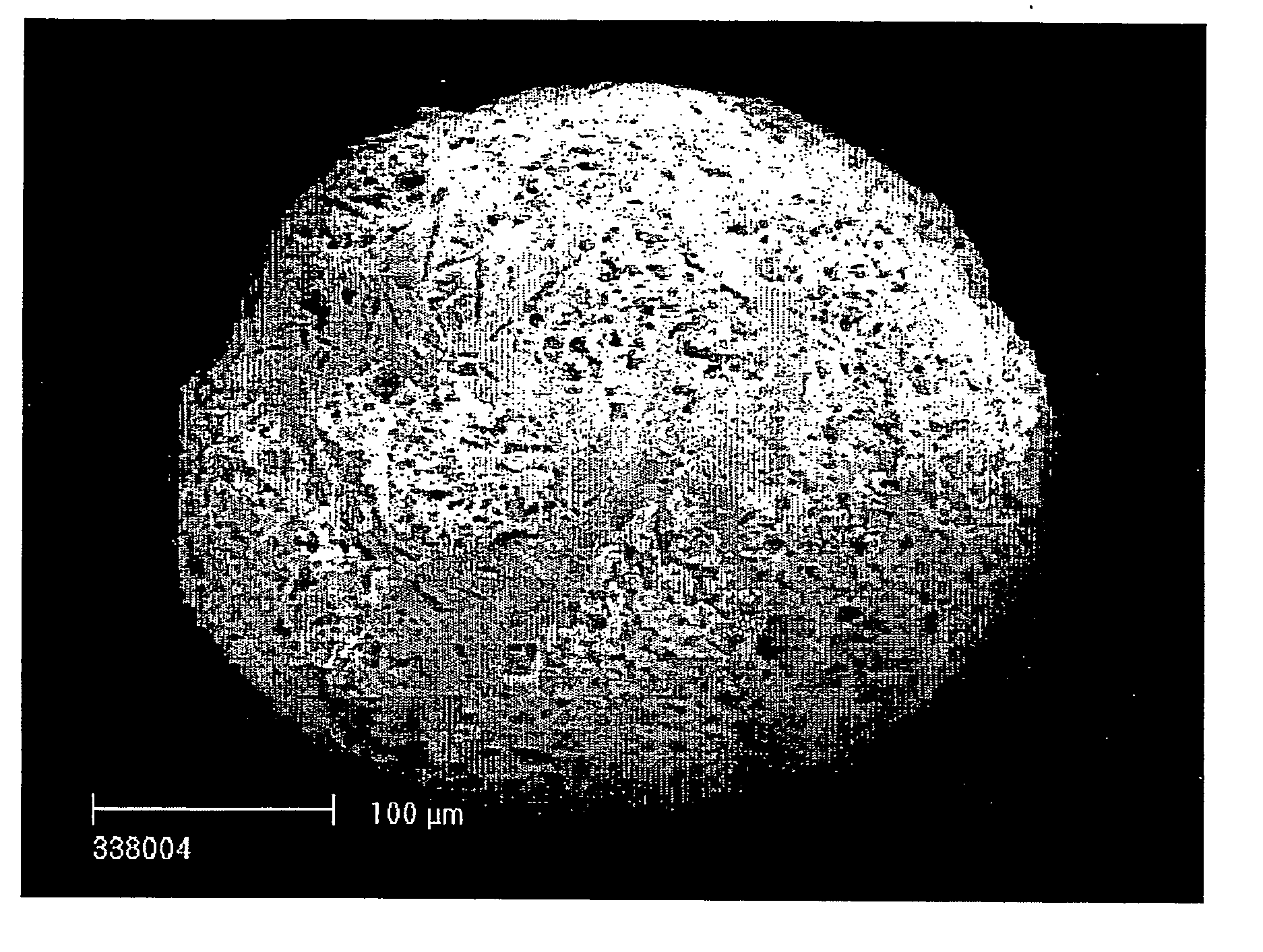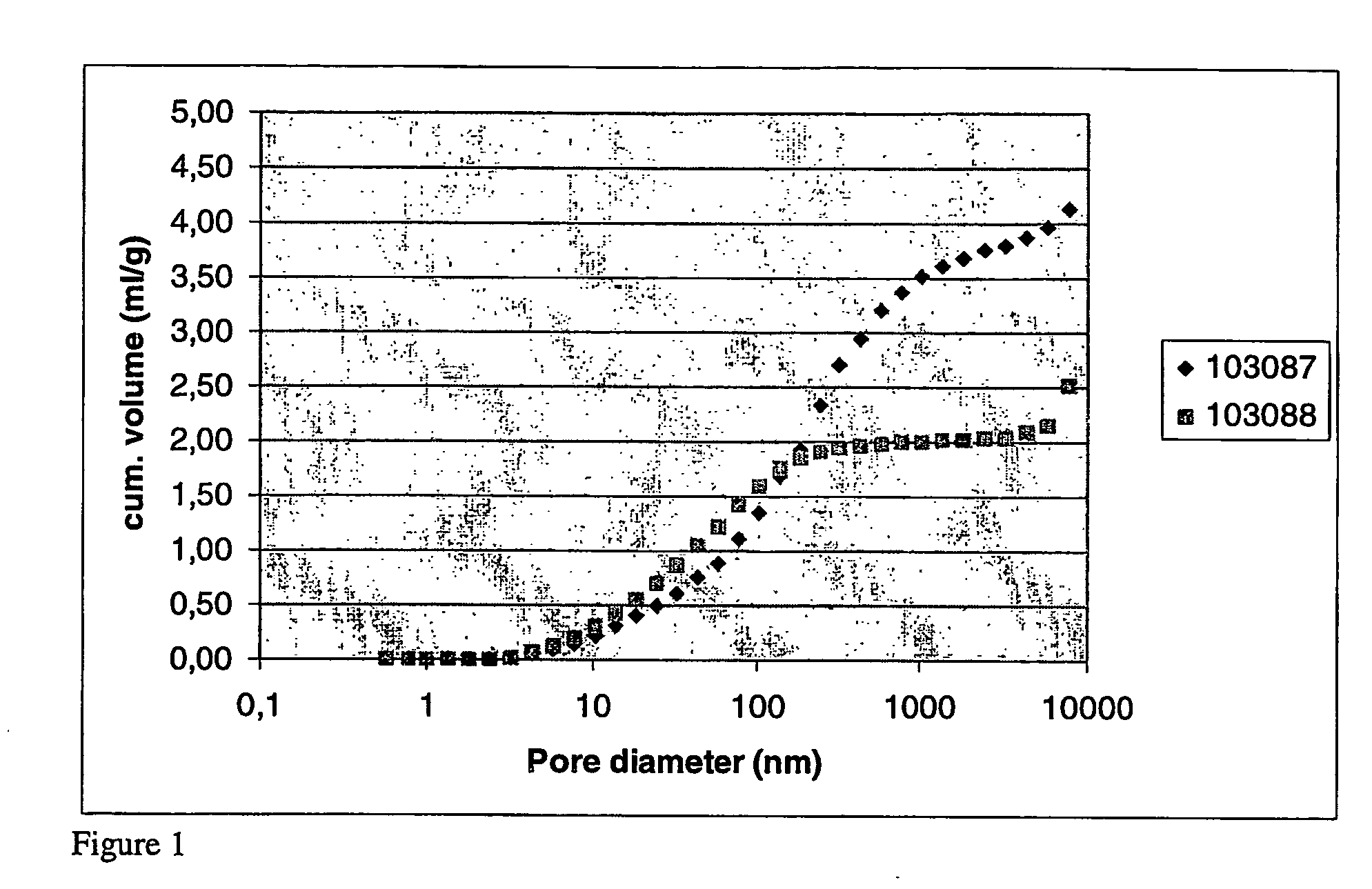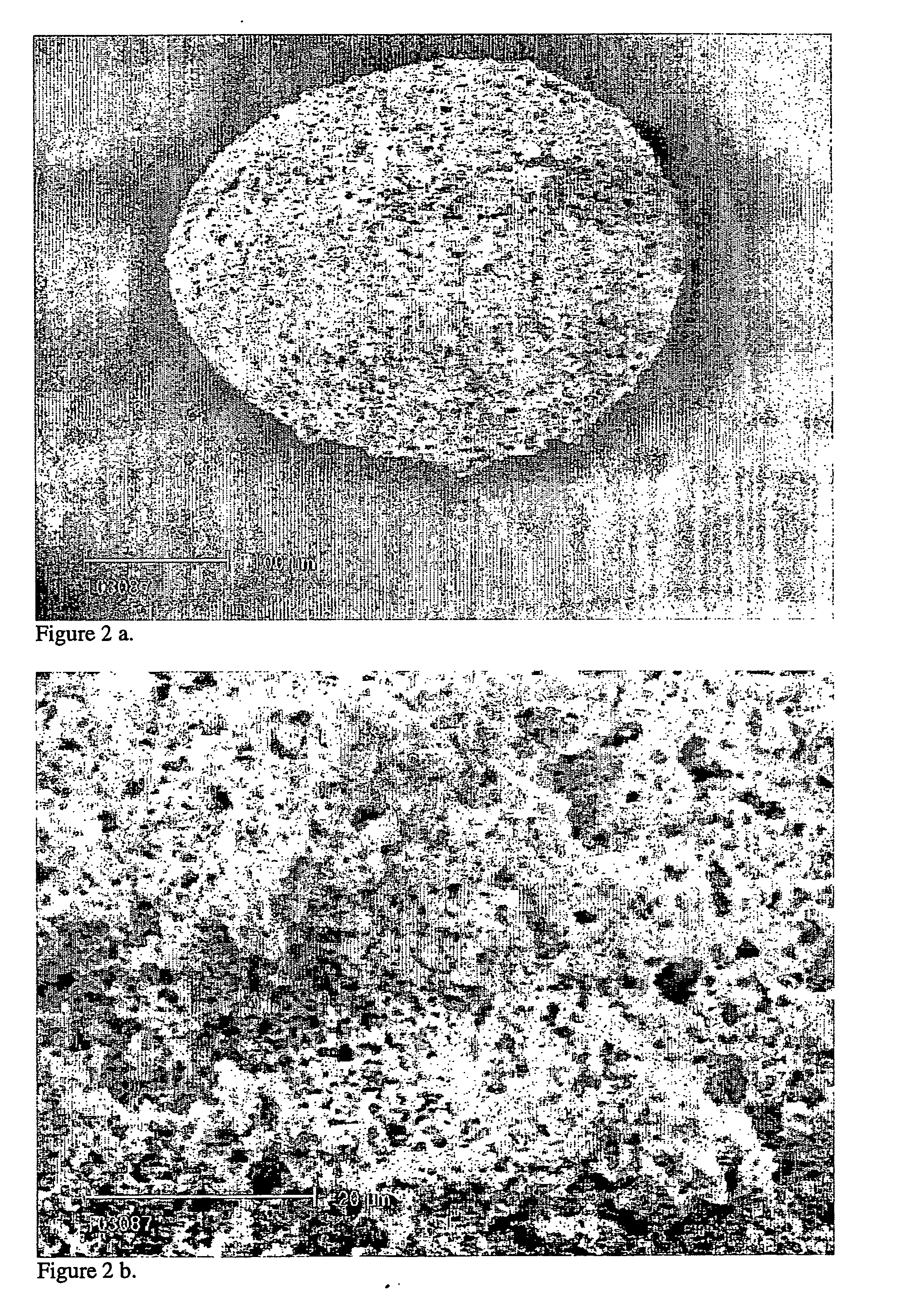Method of producing hierarchical porous beads
- Summary
- Abstract
- Description
- Claims
- Application Information
AI Technical Summary
Benefits of technology
Problems solved by technology
Method used
Image
Examples
example 1
Comparative Example of Non-Hierarchical poly-divinylbenzene Beads
A solution was prepared of 20 ml 63% divinylbenzene, 20 ml 2-ethylhexanol, 0.4 g azobisdimethylvaleronitrile (initiator V-65 from Wako Pure Chemicals Co Ltd, Japan) and 0.4 ml oleic acid. In a 250 ml three-necked flask, 150 ml 2.5% aqueous polyvinyl alcohol (Mowiol 40-88 from Clariant) solution was mixed with 10 ml of a 0.25 mol / l potassium dichromate solution and heated to 70° C. Under 300 rpm stirring with a two-blade swing-out impeller, the monomer solution was slowly poured into the aqueous phase. The emulsion was allowed to polymerise for 2 h at 70° C. and 300 rpm stirring. The spherical polymerised beads were recovered by sieving between 500 and 40 microns and were then washed with water and acetone. By mercury intrusion porosimetry (FIG. 1) they were shown to have a monomodal pore size distribution in the 10-100 nm range.
example 2
Producing poly-divinylbenzene Hierarchical Beads from Plate-Formed Template Particles Treated with a Hydrophobic Agent
A solution was prepared of 20 ml 63% divinylbenzene, 20 ml 2-ethylhexanol, 0.4 g azobisdimethylvaleronitrile (initiator V-65 from Wako Pure Chemicals Co Ltd, Japan) and 0.4 ml oleic acid. Into this solution was mixed 50 g magnesium hydroxide (Fluka—brucite particles with a hexagonal plate-like shape) and the resulting dispersion was deflocculated by treatment with an ultrasonic probe. In a 250 ml three-necked flask, 150 ml 2.5% aqueous polyvinyl alcohol (Mowiol 40-88 from Clariant) solution was mixed with 10 ml of a 0.25 mol / l potassium dichromate solution and heated to 70° C. Under 450 rpm stirring with a two-blade swing-out impeller, the monomer / magnesium hydroxide dispersion was slowly poured into the aqueous phase. The stirring rate was decreased to 400 rpm and the emulsion was allowed to polymerise for 2 h at 70° C. The ellipsoidal polymerised beads were recov...
example 3
Producing poly-divinylbenzene Hierarchical Beads from Rod-Like Template Particles Treated with a Hydrophobic Agent
A solution was prepared of 20 ml 63% divinylbenzene, 10 ml toluene, 0.4 g azobisdimethylvaleronitrile and 0.4 ml dimethyldichlorosilane. Into this solution was mixed 20 g (17 vol %) wollastonite (Wicroll 10 from Partek Nordkalk Corp, Finland)—i.e. rod-like calcium silicate particles with aspect ratio 8:1 and average particle size 4.5 microns). After 10 min, 10 ml 2-ethylhexanol was added and the resulting dispersion was deflocculated by treatment with an ultrasonic probe. In a 250 ml three-necked flask, 150 ml 2.5% aqueous polyvinyl alcohol (Mowiol 4088 from Clariant) solution was mixed with 10 ml of a 0.25 mol / l potassium dichromate solution. Under 550 rpm stirring with a two-blade swing-out impeller, the monomer / wollastonite dispersion was slowly poured into the aqueous phase. The stirring rate was decreased to 300 rpm and the emulsion was allowed to polymerise for 2...
PUM
| Property | Measurement | Unit |
|---|---|---|
| Pore size | aaaaa | aaaaa |
| Concentration | aaaaa | aaaaa |
| Solubility (mass) | aaaaa | aaaaa |
Abstract
Description
Claims
Application Information
 Login to View More
Login to View More - R&D
- Intellectual Property
- Life Sciences
- Materials
- Tech Scout
- Unparalleled Data Quality
- Higher Quality Content
- 60% Fewer Hallucinations
Browse by: Latest US Patents, China's latest patents, Technical Efficacy Thesaurus, Application Domain, Technology Topic, Popular Technical Reports.
© 2025 PatSnap. All rights reserved.Legal|Privacy policy|Modern Slavery Act Transparency Statement|Sitemap|About US| Contact US: help@patsnap.com



